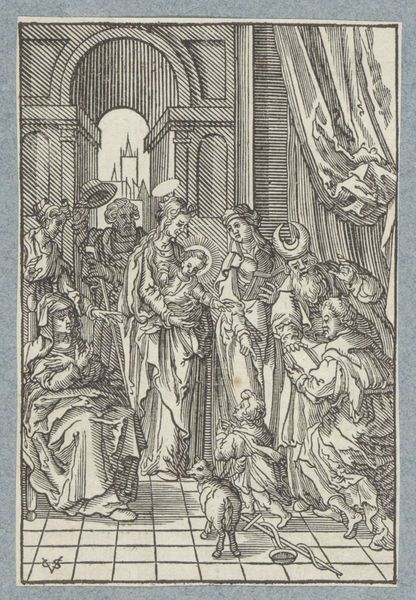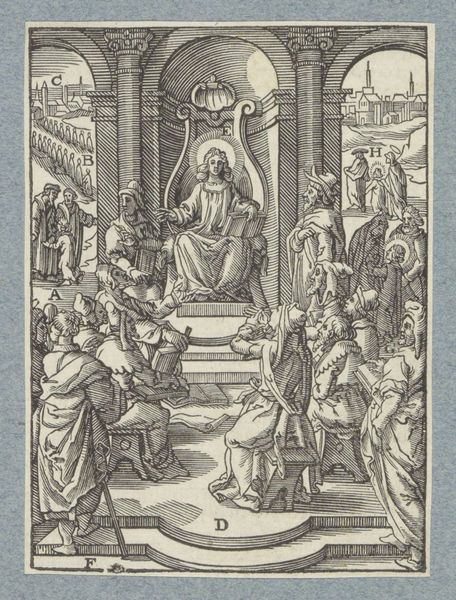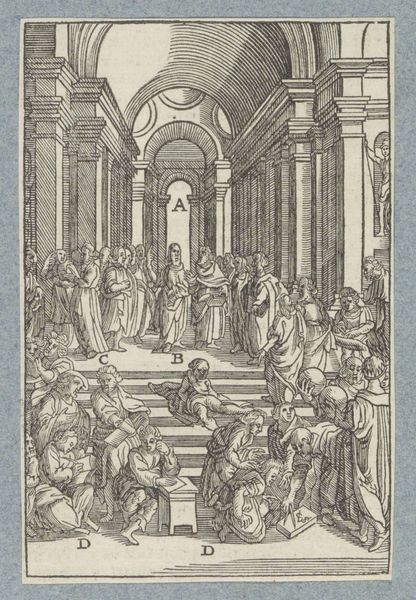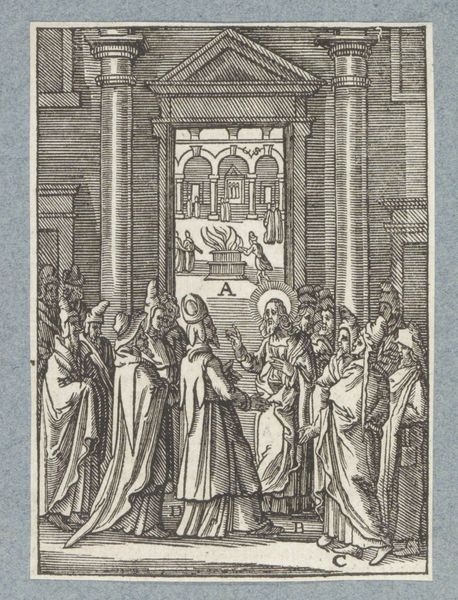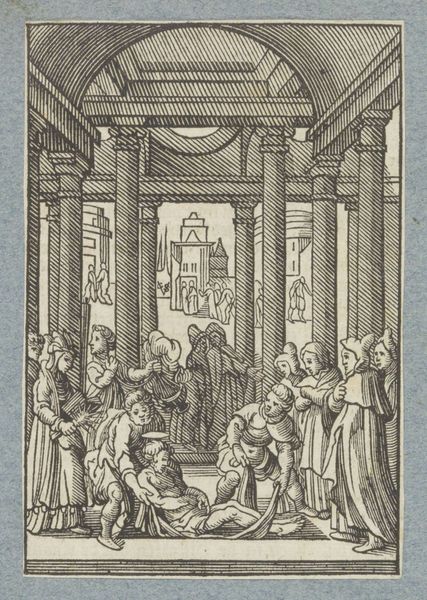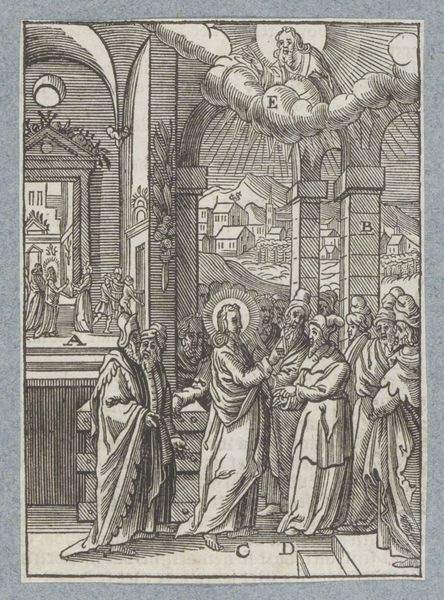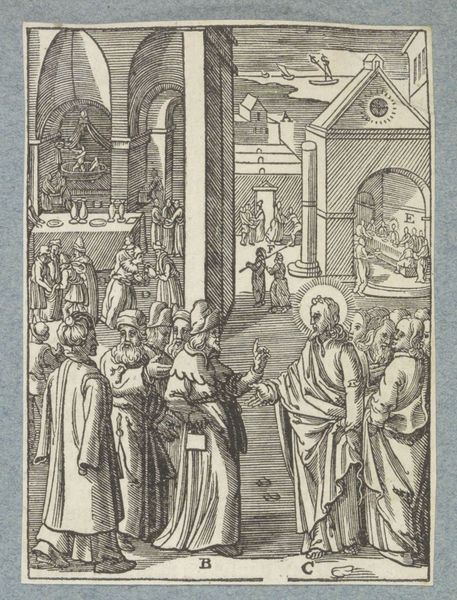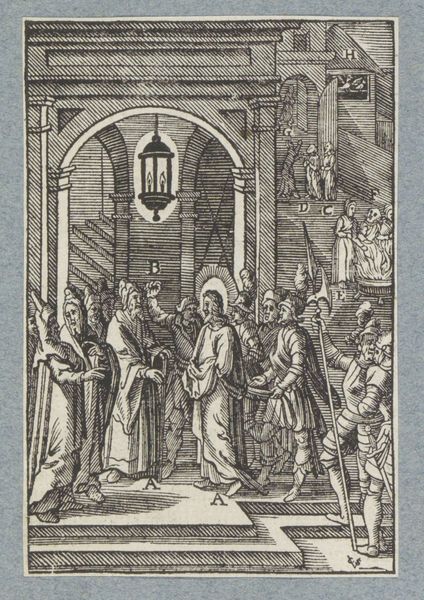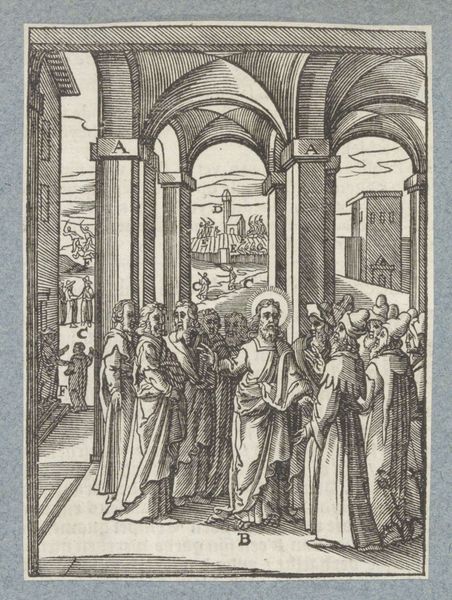
print, engraving
#
baroque
# print
#
figuration
#
line
#
history-painting
#
engraving
Dimensions: height 113 mm, width 74 mm
Copyright: Rijks Museum: Open Domain
Curator: We're standing before "Christus en de overspelige vrouw," an engraving crafted around 1629 by Christoffel van (II) Sichem, here on display at the Rijksmuseum. Editor: It strikes me immediately as a moment of high drama, yet rendered with incredible stillness. The lines, so sharp, almost vibrate with contained energy. Curator: Indeed. Sichem masterfully employs the linear style of Baroque printmaking to convey a complex narrative. Notice how the composition, framed by classical columns, creates a stage for the encounter between Christ and the adulterous woman. The background scene of people ascending steps toward a doorway suggests societal judgment while the main group occupies the immediate foreground. Editor: Absolutely, it's about the clash between sacred mercy and societal law. Those columns feel weighty, like the pillars of patriarchy bearing down. The woman, vulnerable, is quite literally cornered, dragged before Christ. One might also note the city visible through the rear portal seems claustrophobic. Are there possible relationships, here, between power and virtue? Curator: The city, or more particularly the "Gate to the City" holds rich iconographic potential here. But perhaps equally central is how Christ challenges the moral high ground of the Pharisees, forcing them to confront their own potential for sin and hypocrisy. Consider the gaze—or the lack thereof—directed at the woman. She embodies the marginalized. Editor: That's so crucial. We must consider, then, that in depicting this very public shaming and the near certainty of harsh judgment, Van Sichem’s work highlights the precarious position of women throughout history and how institutions use such shaming to consolidate and strengthen its power. The halos are also very pointed: who are we taught to believe, or accept, as morally "good"? Curator: The artist invites contemplation of grace, judgment, and redemption—universal themes that remain relevant through the ages. Note the details that hold continuity over time: an archway as access and transition, the central place of the village (society), how a gesture or a glance signals assent and moral endorsement. Editor: For me, the image evokes feelings of unease, reflecting on the enduring struggle between empathy and dogma, the personal versus the political. Its questions around shame and authority resound today. It is quite remarkable that something so “old” is perpetually "new." Curator: A remarkable image, wouldn't you agree, reminding us that compassion can indeed challenge deeply embedded structures?
Comments
No comments
Be the first to comment and join the conversation on the ultimate creative platform.
